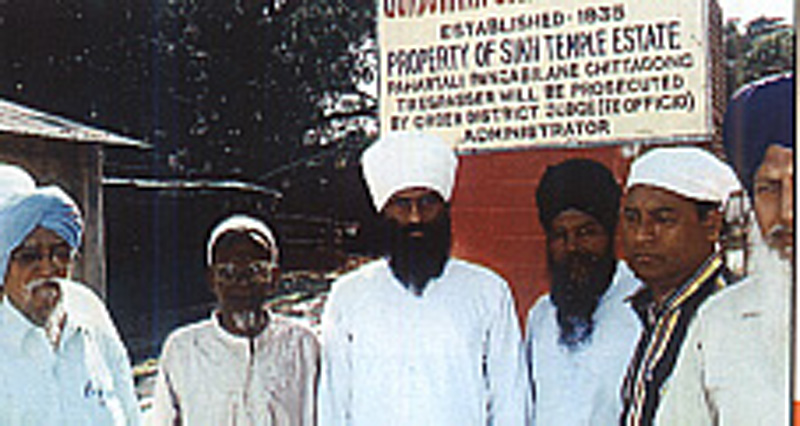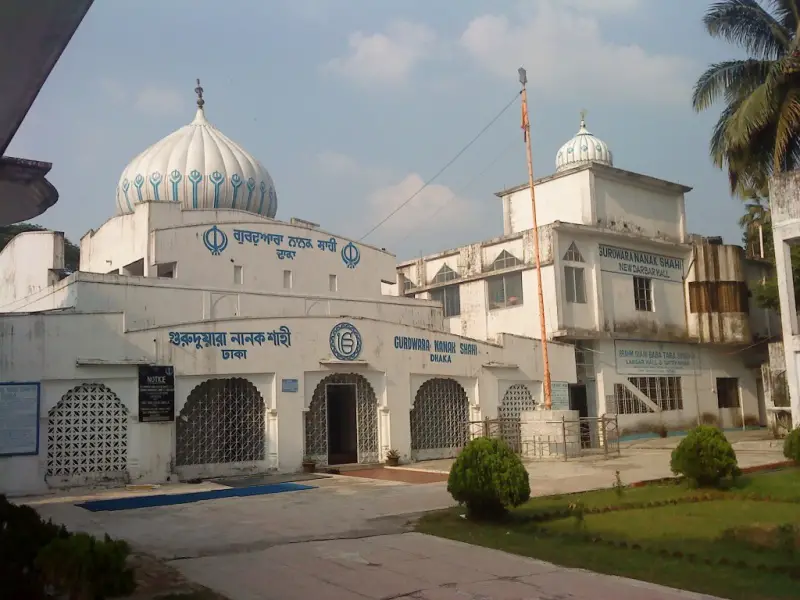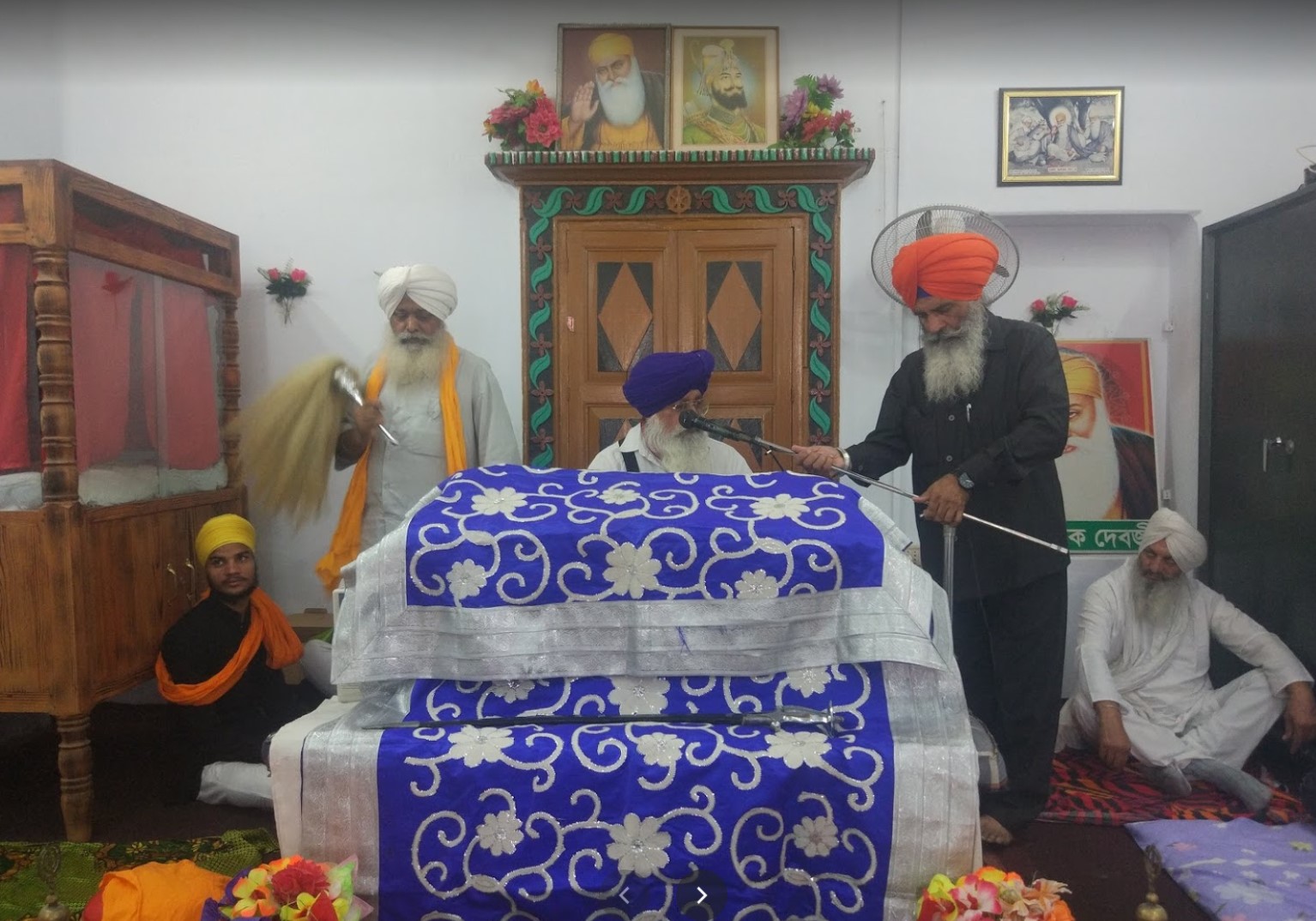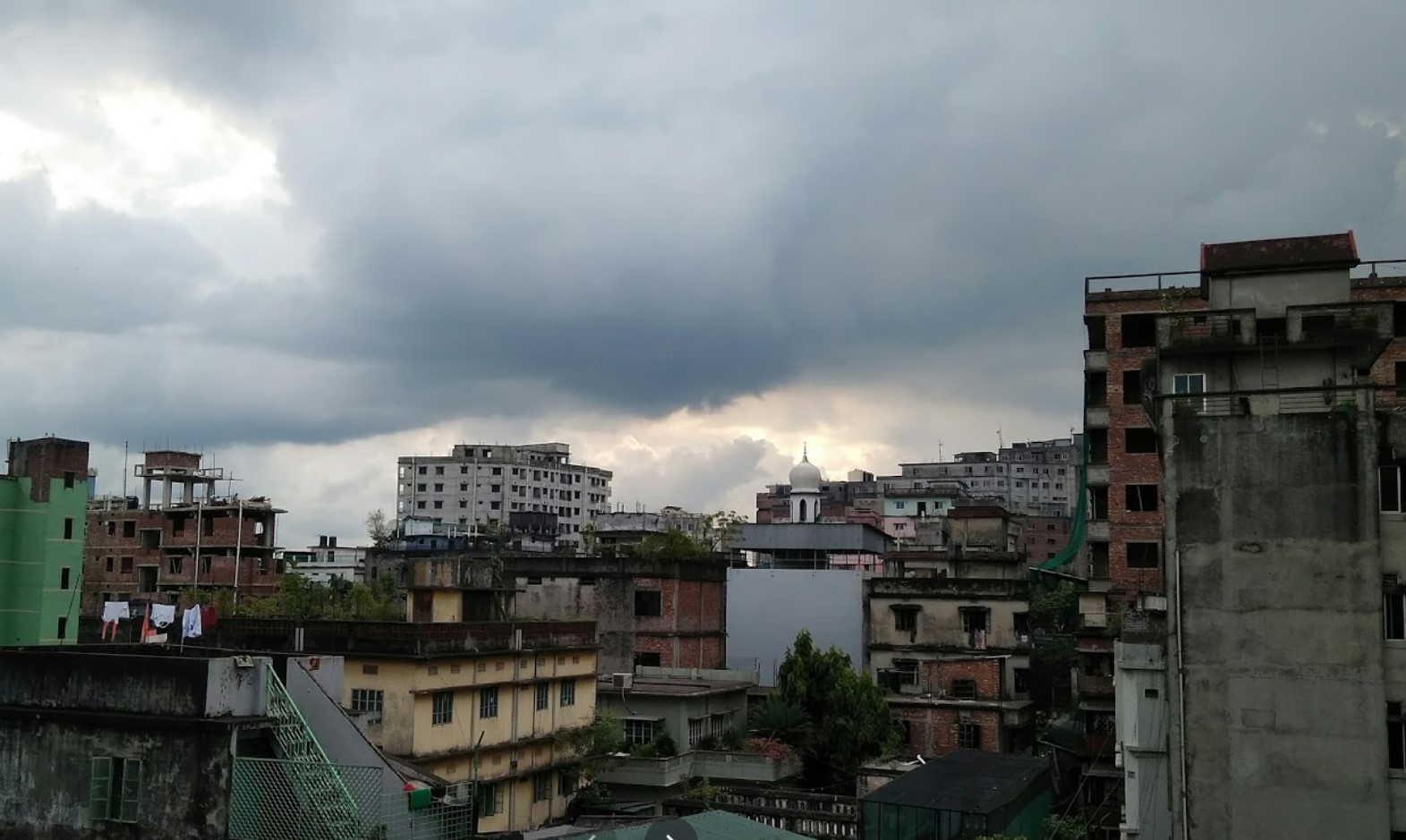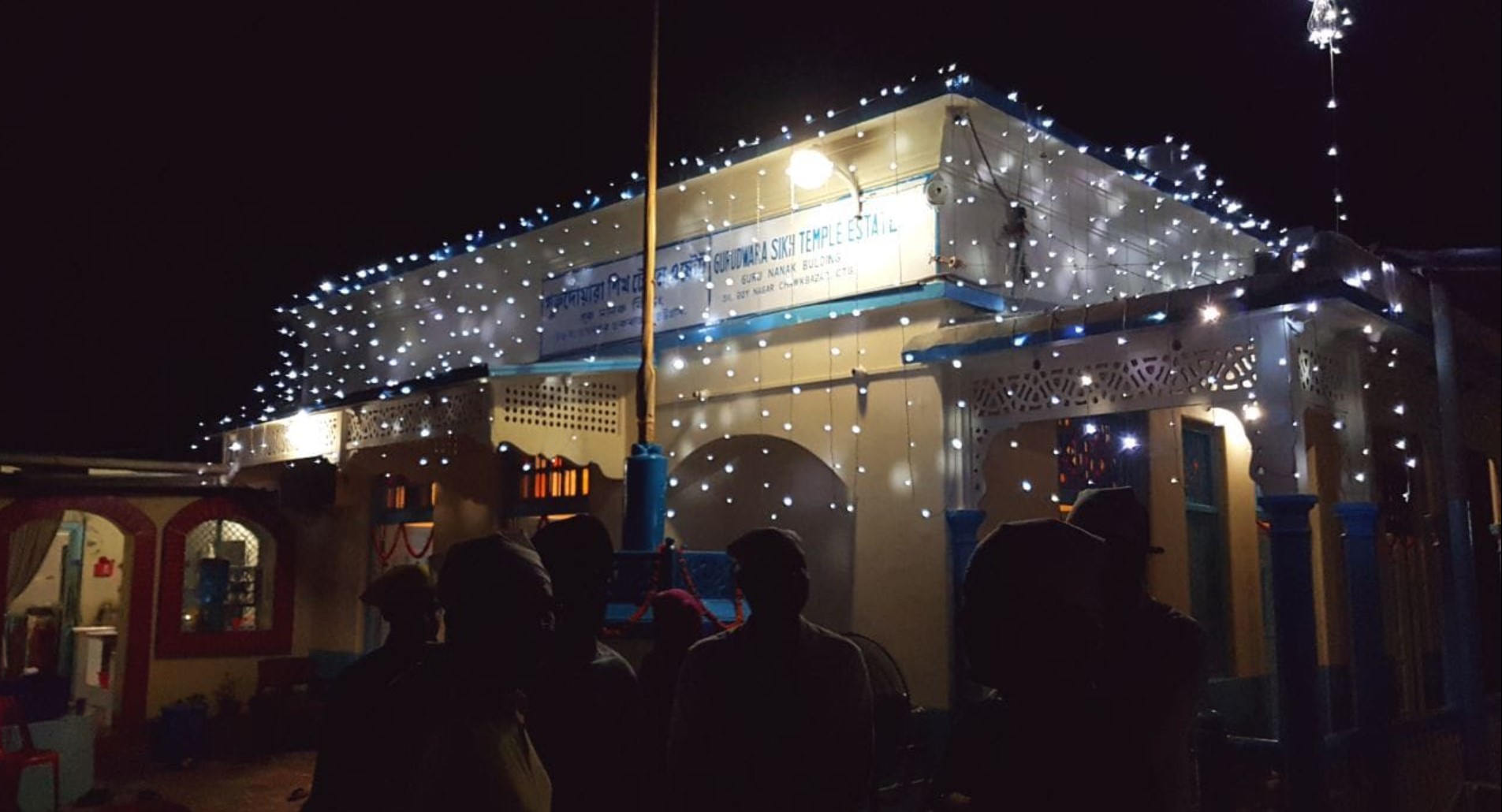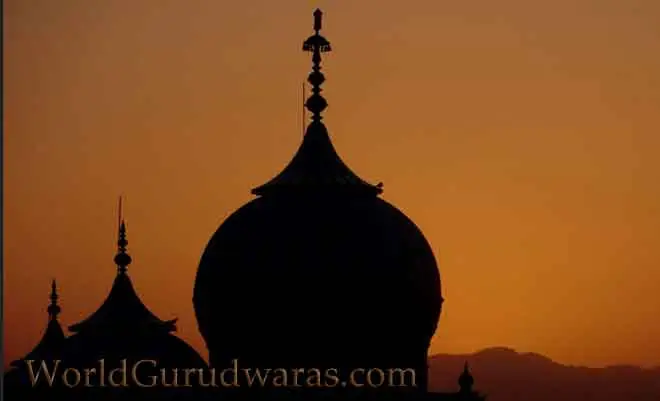Gurudwaras in Bangladesh
There are seven known Gurdwaras in Bangladesh. The most well known is Gurdwara Nanak Shahi Dhaka; it is the most important historic Gurdwara, commemorating the visit of Guru Nanak in 1506-1507. This Gurdwara is said to have been built in 1830. Besides, Sri Guru Tegh Bahadur, the ninth Guru of the Sikhs stayed at Dhaka for over two years. The news of the birth of his only son Sri Gobind Rai – Guru Gobind Singhji Maharaj – in Patna was received by Guru Tegh Bahadur when he was sojourning in Dhaka. This gurdwara is among the few places outside India which were graced more than once by Guru Baba Nanak. Its historic and religious importance outside India is second perhaps only to the Gurdwaras of Nanakana Sahib and Panja Sahib.
Sikhs constitute a small minority in Bangladesh. They usually come from abroad and live here temporarily. Sikh gurus also did not stay very long in Bangladesh to propagate their religion. During the Mughal and British rule, Sikh soldiers used to be posted to Bangladesh for short periods. They kept very much to themselves and did not develop close relationships with the local people from whom they differed not only in religion but also in language and lifestyle.
In Bangladesh Sikhism exist as a minor religion with approximately 15000-20000 followers. The grand secretary of Gurudwara management committee in Bangladesh told this author that in Bangladesh there are seven Gurudwaras. Those are: Gurdwara Guru Nanak Chowk Bazar, Dhaka; Gurdwara Nanak Shahi, Dhaka university campus, Dhaka; Gurdwara Sangat Tola, Dhaka; Gurdwara Sri Guru Tegh Bahadur, Dhaka; Sikh Temple Chowk Bazaar, Chittagong; Sikh Temple Punjabi Lane Phahartali, Chittagong; Gurdwara Sahib Shivpuri, Mymensingh. The main Sikh temple in Bangladesh is Gurdwara Nanak Shahi situated on the campus of Dhaka University. All of above Sikh Gurdwaras is run by charitable fund.
If there are any omissions or errors in Gurudwara Sahibs listed in Bangladesh or there are additional Gurudwaras in Bangladesh, Please Contact Us with details.
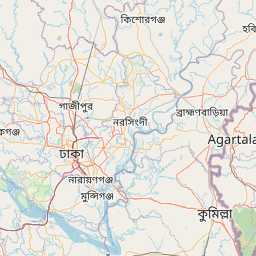



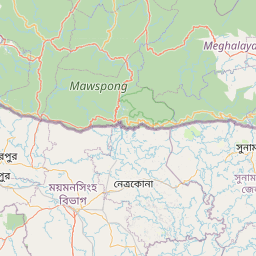



















Gurdwara is located at Pahartali ,Chittagong and it was built for the Sikh Railway Employees. In Chittagong there is another Gurdwara Known as Pahartali Gurdwara. It was built by the Sikhs employees in Loco Workshops, before the partition of the country. It is under the care of Sewadar of Chauk Bazar Gurdwara and the local […]
Gurdwara Nanak Shahi, Dhaka is one of the seven known Gurdwaras in Bangladesh. It is the most important historic Gurdwara, commemorating the visit of Guru Nanak in 1506-1507. This Gurdwara is said to have been built in 1830. Besides, the founder Guru, Sri Guru Tegh Bahadur, the ninth Guru of the Sikhs also stayed at […]
It has been renovated, and is being managed by a Sikh pujari, Bhai Hari Singh, under arrangement of the Bangladesh Management Board. It is self supporting and needs no funds to maintain it except pay of the Bhai. It is not a historical gurdwara and was built by Late Shri Jatinder Mohan Chatterjee, one time […]
An another important place connected with the visit of Guru Nanak Dev Ji is Sylhet. The Gurdwara is a heap of rubble, the land and a building still stands in the name of the Temple. Gurdwara NanakShahi is situated in Sylhet, Bangladesh a site once visited by Guru Nanak Dev Ji. Guru Nanak visited Dhaka […]
Gurdwara Sangat Tola was visitd by Guru Tegh Bahadur. On his way to Assam his local followers had received him with great affection building the two storey Gurdwara for his stay. The Guru and some of his Devotees accompanied a force of Mughal Soldiers dispatched to Assam. Guruji’s assistance averted hostilities between Assam and Mughal […]
Janam Sakhi has a reference to Guru Nanak having been to Chittagong. A Devout carpenter, Jhanda by name, was the first to pay his respects to Guru Nanak and to be blessed by the Master. Subsequently, Inder Sain, the nephew of the ruler, and later the ruler, Sudhar Sain, himself became the Guru’s disciples. On […]
This Gurudwara is situated at Neelket Road, Ramna, Dhaka, Bangladesh. Baba Gurditta under the direction of Guru Hargobind ji in the early 17th Century, as stated above sent a very zealous missionary and a holy sikh. Almast by name to Jehangirabad, Dhaka as was then officially known. Almast establisted a monastery at a place that was sanctified by Guru […]
